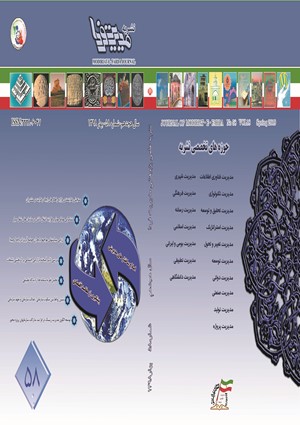Identification of factors influencing the decision-making behavior of individual investors and the related pattern Using the combination research approach
Subject Areas :mohammadhossein abdorrahimian 1 , taqi torabi 2 , seyyedjalal sadeghisharif 3 , roya darabi 4
1 -
2 - Islamic Azad University
3 -
4 -
Keywords: decision making", , ", behavioral finance", , ", culture", , ", personality", , ", herding behavior.,
Abstract :
To achieve the goals, a hybrid research strategy has been used in this research. In qualitative research, 16 factors affecting the behavior of individual investors (availability, limited attention, self atribution, anchoring point, over confidence, gambler's fallacy, loss aversion, increasing risk appetite, justification, optimism, regret aversion , time horizon, control center, tolerance of ambiguity, confident- anxious, careful-impetuous) which was obtained through the method of analyzing the content of semi-structured interviews of capital market experts, which were based on the construction of a researcher-made questionnaire. In the quantitative section, the final model of decision-making behavior of the individual investors was extracted using structural equations and fitted out. In the capital market of Iran, the model of the behavior of individual investors begins with cultural factors. In other words, the underlying factor in the behavior of investors is the factor of culture. The theory that emotional biases are prior to cognitive biases is not confirmed in this research. Personality has a positive relationship with herding behavior. In other words, category of anxiety in stockholders, increases the volume of their herding behavior.
فهرست منابع
* بدری، احمد، (1388)، دانش مالی رفتاری و مدیریت دارایی. تهران، کیهان.
* رضائیان، علی، (1387)، مبانی مدیریت رفتار سازمانی، تهران، انتشارات سمت.
* سعیدی، علی و فرهانیان، سید محمدجواد، (1390)، مبانی اقتصاد و مالی رفتاری، شرکت اطلاعرسانی و خدمات بورس، چاپ اول.
* غیور، سید مرتضی، (1392)، ارائه الگوی رفتاری سرمایهگذاران خراسان رضوی، دانشگاه فردوسی مشهد، مشهد، پایاننامه دکتری.
* مدیری، محمود، شکیبایی ثابت، معصومه و رنگ ریز، حسن، (1393)، شناسایی و اولویتبندی عوامل انگیزشی مؤثر بر تسهیم دانش بین کارکنان دانشی با رویکرد تصمیمگیری چند معیاره فازی، مجله مدیریت توسعه و تحول، شماره 18، صص 46-62.
* موحد محمدي، حميد و پور آتشی، مهتاب، (1395)، راهنماي گامبهگام مدلسازی معادله ساختاري: با استفاده از نرمافزار AMOS Graphic، انتشارات دانشگاه تهران.
* هومن، حیدر علی، (1391)، مدل یابی معادلات ساختاری با کاربرد نرمافزار لیزرل (با اصلاحات)، تهران، سازمان مطالعه و تدوین کتب علوم انسانی دانشگاهها (سمت).
* Betsch, T. and S. Haberstroh. (eds.) (2005). The routines of decision making. Mahwah, NJ and London: Lawrence Erlbawm.
* Bikhchandani, S, Hirshleifer,D. & Ivo Welch. (1998). Learning from the Behavior of Others: Conformity, Fads, and Informational Cascades. The Journal of Economic Perspectives, 12 (3), 151–170.
* Bhatta, M. (2009). Behavioral Finance A Discussion on Individual Investors' Biases, Management Accountant, 44 (2), 138-149.
* Gigerenzer, G., & Selten, R. (Eds.) (2002). Bounded rationality: The adaptative toolbox. MIT Press.
* Grinblatt, M., and Han, B. (2005). Prospect Theory, Mental Mccounting, And Momentum, Journal o f Financial Economics,78 (3),311–339.
* Kim, K. A., and Nofsinger, J. R. (2008). Behavioral finance in Asia. Pacific-Basin Finance Journal, l6 (4), 1-7.
* Obamuyi, T. M. (2013). Factors influencing investment Decisions in capital market: A study of individual investors In Nigeria, Organizations and markets in emerging economies, 4, 1 (7).


